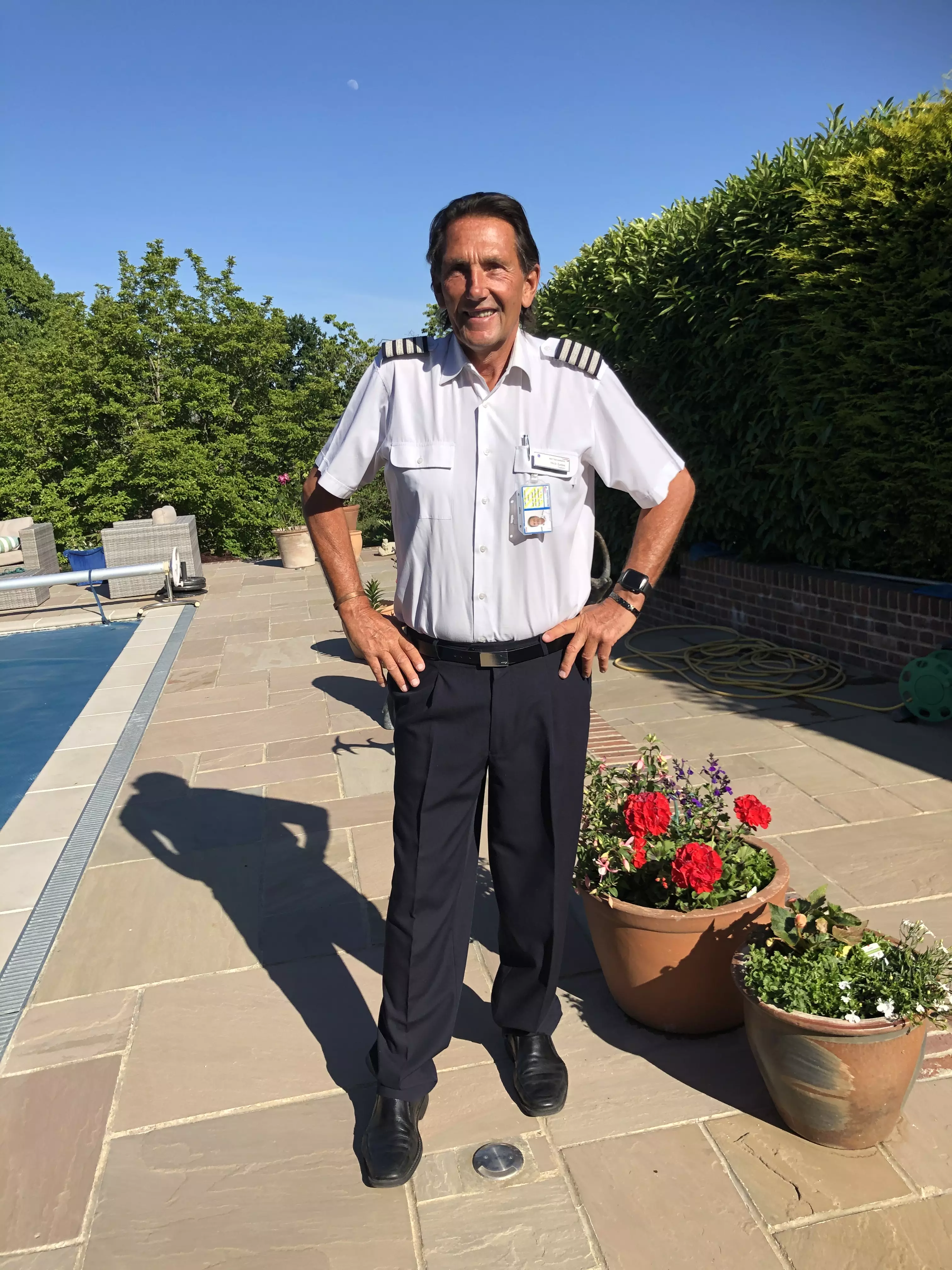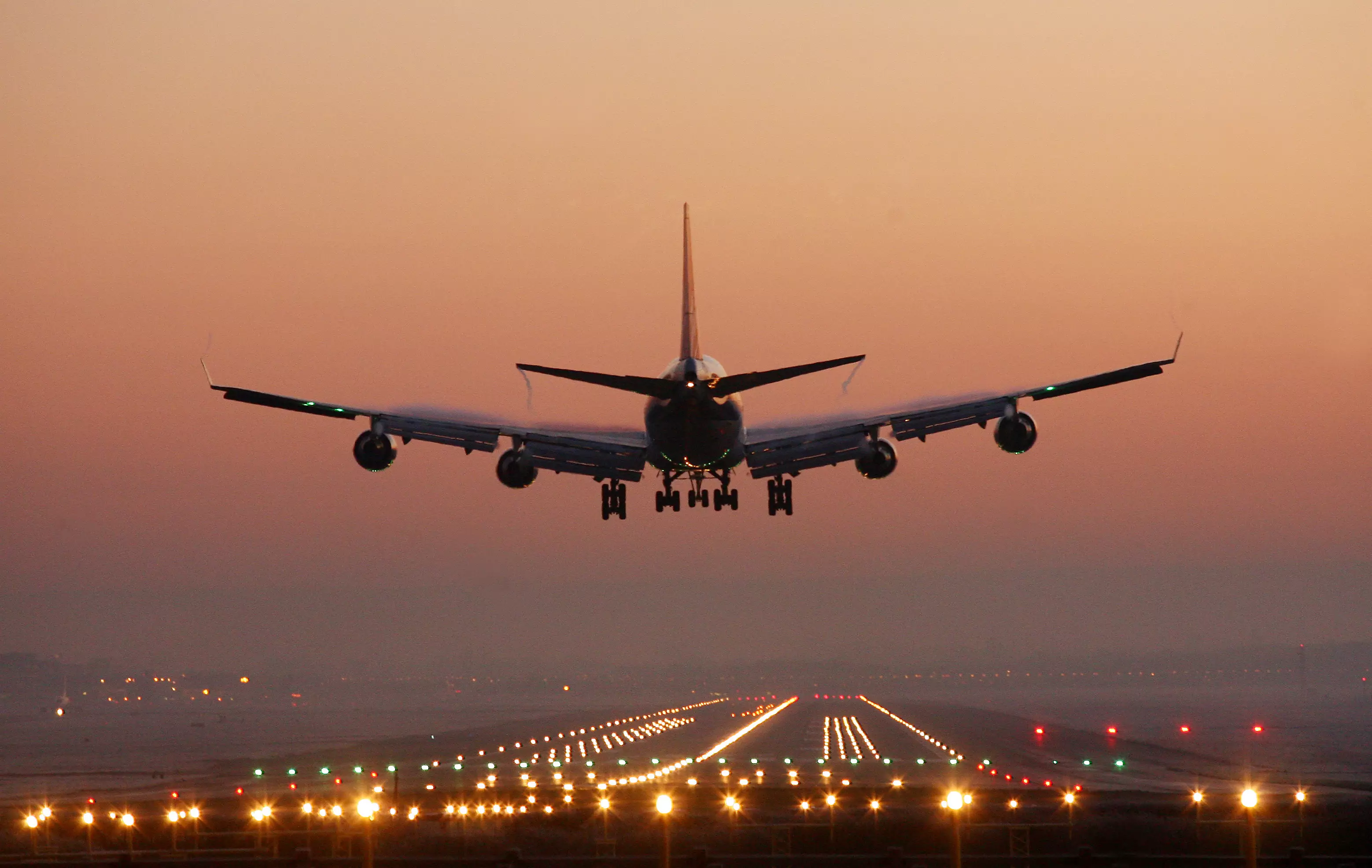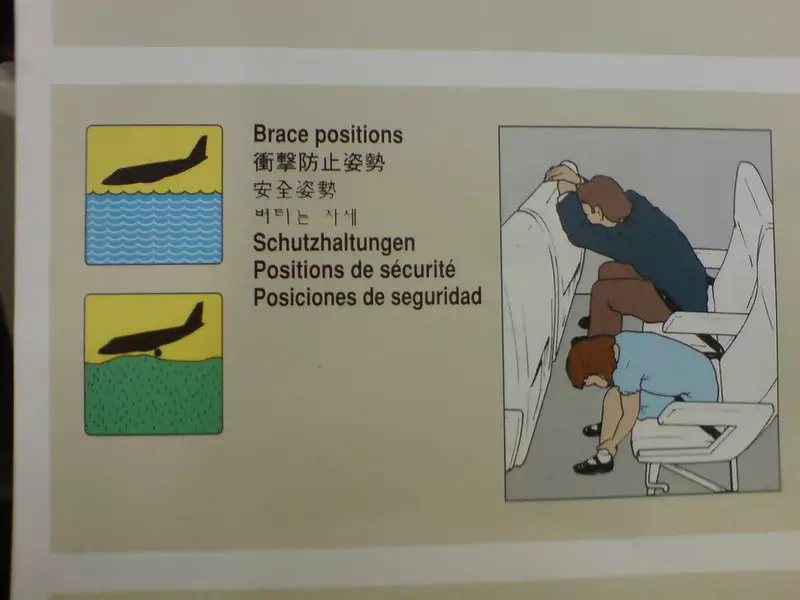
A pilot has revealed the truth about the brace position we use on planes in an emergency - along with other practices and customs that you may have always pondered while travelling.
The brace position is one of many aspects of flying that remains fairly elusive to the general public. Just like having to turn your phone on airplane mode or pulling the blinds up before landing, we know it's something we're told to do, but don't really understand why.
The position involves bending forward and putting your hands over your head to prepare for a crash, supposedly to help your body brace for impact.
Advert
But because many of us - thankfully - have never had to deploy the move, we've been left to speculate about both its efficiency and true purpose, with long-running rumours suggesting the position is actually designed to kill passengers immediately in the event of an emergency.
However, a top pilot has explained that there isn't any truth to the morbid theory, saying that the position is, indeed, designed to protect people.
Nick Eades, who is the world's most experienced Boeing 747 pilot, told LADbible: "What you're trying to do is to stop people breaking their necks in a big impact."
Advert
He continued: "You're just trying to get the body into a position that's going to suffer least damage.
"It's like whiplash - you're trying to avoid that sudden movement of the head, which can result in serious injury, if not death."
Eades, whose new book The Self Improver: A Pilot's Journey details his successful career as a pilot, also explained that the system has now changed, and that cabin crew will no longer tell people to brace.

Advert
Having been in the industry for more than 40 years, he recalled a number of occasions where he faced technical difficulties and had to instruct passengers to adopt the brace position.
Eades said: "I've had a couple where we had problems with the landing gear, and the cabin crew shout to all the passengers, 'Brace, brace!'
"Now, if you think about it, I would say at least half - probably three-quarters - of passengers on the aeroplane don't speak English as a first language. And if you think about it, what does 'brace' mean?
"It took a long time for the aviation world to realise if you're suddenly thrown into an emergency situation and people start shouting 'brace' at you, you might think, 'What the hell do they mean?'"
Advert
He explained that, while the position is the same, the instruction is changing.
Eades said: "The brace position is going to become redundant, so cabin crew won't shout 'brace' at you anymore.
"They'll say, 'Head down, hands over your head. Head down, hands over your head.'
"At least that gives somebody in probably the most stressful position they'll ever be in in their lives something to do."

He added that some seats aren't facing forwards, which means a different position is needed.
Advert
Eades also explained why planes' lights are dimmed for landing and passengers are told to ensure blinds are up - saying this is another safety technique that has a dual importance, all stemming from an incident back in the 1970s.
He said: "In Rhodesia in the 70s, they had a war and there was a viscount - which is a four-engine propeller aeroplane - coming in to land.
"But all the blinds were up and that gave the terrorists - the guerillas in the jungle - something to shoot at.
"What these guys were doing was they were waiting for the aeroplane to come in and the lights were all on.
"They could actually see something and they shot two of the viscounts down, with a loss of life."

But as well as stopping an aircraft from being a target, the method also helps passengers in an emergency.
Eades continued: "Let's say you're landing at night. If the blinds were all down and the lights were up, if suddenly everything became dark, it takes the human eye quite a long time to react to the change in light.
"So what we do now is we dim the aeroplane for landing at night, and we lift the blinds up so people can see out, and also so their eyes are adjusted to the light."
He added: "A part of the eye opens and closes, and it takes a while to do that and to adjust to light, so it's just adjusting people to the environment, just in case there is a problem.
"You'll have far greater chance of being able to see what's going on and getting out."
Find out more about Eades' book, The Self Improver: A Pilot's Journey, here.
Featured Image Credit: Nick Eades/PATopics: Plane, World News, Pilot, News, travel
